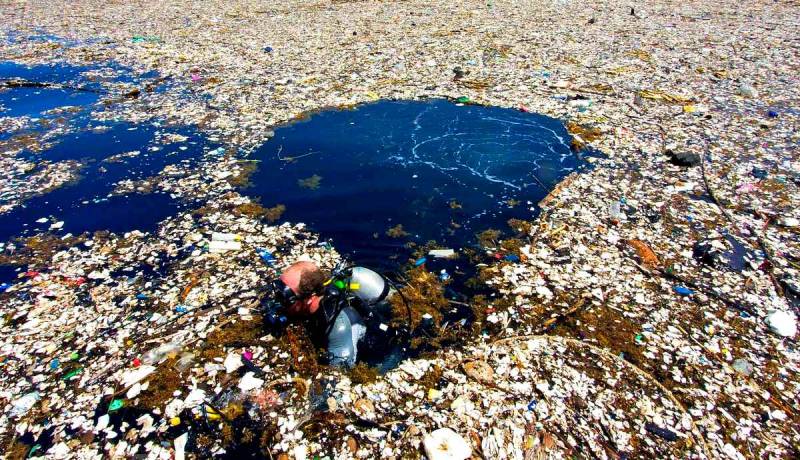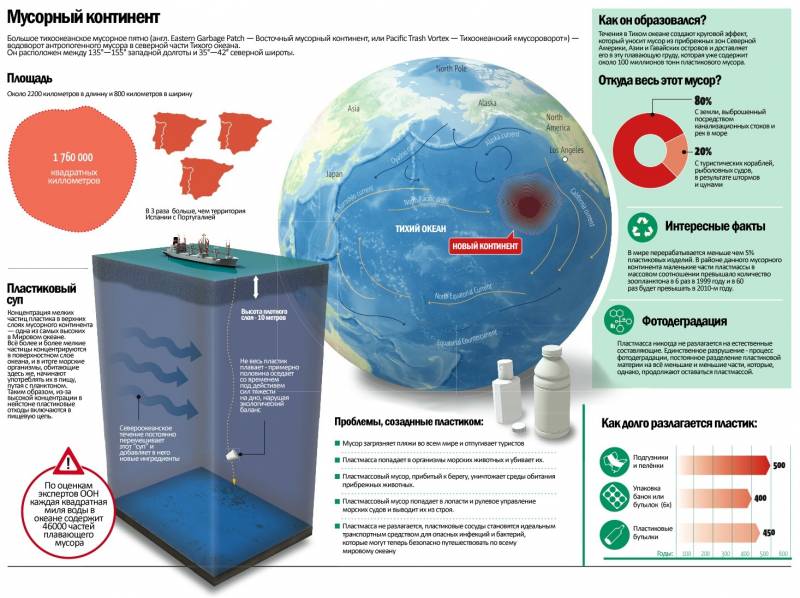A breakthrough scientific discovery will save our planet
Environmental pollution from human waste is a huge problem. When scientists invented plastic with its unique properties, no one could have imagined that in less than 100 years, garbage islands, the area of France, consisting of small particles of this substance, would appear in the oceans. Also, no one could suggest that the microparticles of plastic will be included in the food chain and will accumulate in the human body.
At the end of the 80s in the Pacific Ocean they found the so-called “Big Pacific Trash Spot” (we’re talking about it wrote previously), consisting of small particles of plastic. Its area may be about 700 thousand square kilometers. This “garbage continent” has been formed by ocean currents that collect plastic and other waste from land-based sources in North America, Japan, and Southeast Asia. Another 20% of the garbage enters the ocean from ships passing through it.
The problem of plastic waste is that plastic is not biodegradable, but only breaks up into small particles under the influence of sunlight. Accumulating in sea water, toxic substances poison marine life and birds. The situation is so serious that in the UK a number of activists tried to draw attention to it in a very unusual way: by inviting the United Nations to recognize the collection of plastic waste as a state called the “Garbage Islands”. The initiators even came up with a “trash currency” called “debris”, postage stamps and passports of the “trash state” from recycled paper.
Fortunately, the problem of rubbish is dealt not only by “creators”, but also by serious scientists. In the United States, which are the largest suppliers of garbage, active work is underway on an enzyme of bacterial origin called PETase. This enzyme was discovered recently in Japan when it turned out that during the evolutionary process, bacteria learned to eat plastic, decomposing the world's most common thermoplastic polyethylene terephthalate, or just PET.
With the help of British colleagues in the Diamond Light Source laboratory, the enzyme was irradiated with X-rays, and its more efficient form was modeled. The resulting "mutant" was more effective than its natural counterpart. A joint creation of American and British scientists can decompose even polyethylene furandicarboxylate.
Thanks to the method used, it is possible to further improve the enzyme, which will be able to clean the planet from plastic debris.
At the end of the 80s in the Pacific Ocean they found the so-called “Big Pacific Trash Spot” (we’re talking about it wrote previously), consisting of small particles of plastic. Its area may be about 700 thousand square kilometers. This “garbage continent” has been formed by ocean currents that collect plastic and other waste from land-based sources in North America, Japan, and Southeast Asia. Another 20% of the garbage enters the ocean from ships passing through it.
The problem of plastic waste is that plastic is not biodegradable, but only breaks up into small particles under the influence of sunlight. Accumulating in sea water, toxic substances poison marine life and birds. The situation is so serious that in the UK a number of activists tried to draw attention to it in a very unusual way: by inviting the United Nations to recognize the collection of plastic waste as a state called the “Garbage Islands”. The initiators even came up with a “trash currency” called “debris”, postage stamps and passports of the “trash state” from recycled paper.
Fortunately, the problem of rubbish is dealt not only by “creators”, but also by serious scientists. In the United States, which are the largest suppliers of garbage, active work is underway on an enzyme of bacterial origin called PETase. This enzyme was discovered recently in Japan when it turned out that during the evolutionary process, bacteria learned to eat plastic, decomposing the world's most common thermoplastic polyethylene terephthalate, or just PET.
With the help of British colleagues in the Diamond Light Source laboratory, the enzyme was irradiated with X-rays, and its more efficient form was modeled. The resulting "mutant" was more effective than its natural counterpart. A joint creation of American and British scientists can decompose even polyethylene furandicarboxylate.
Thanks to the method used, it is possible to further improve the enzyme, which will be able to clean the planet from plastic debris.


Information